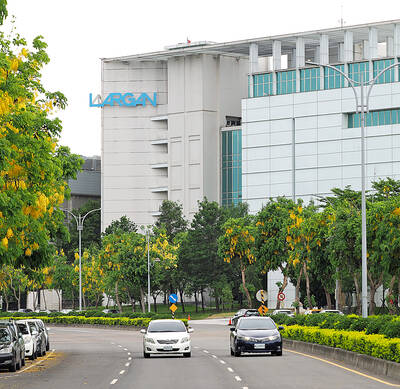The unemployment rate fell 0.1 percentage points year-on-year to 3.38 percent last year, the lowest in 24 years, as Taiwan continued to reap a windfall from investment by global technology titans in building artificial intelligence (AI) capacity, the Directorate-General of Budget, Accounting and Statistics (DGBAS) said yesterday.
That came as the unemployment rate last month dropped 0.04 percentage points month-on-month to 3.32 percent, as more first-time jobseekers landed positions and fewer people lost work to seasonal or temporary hiring, the statistics agency said.
The jobless rate would ease further this month as retailers, restaurants and entertainment facilities are raising headcounts to meet seasonal business needs ahead of the Lunar New Year holiday, Census Department Deputy Director Tan Wen-ling (譚文玲) said.

Photo: CNA
The downtrend would likely come to an end next month, when discontented workers would choose to move on after the holiday, Tan said.
The unemployment rate after seasonal adjustments lost 0.02 percentage points to 3.39 percent, affirming a stable job market, the DGBAS said.
The jobless population declined by 1.07 percent, or 4,000 people, to 399,000 last month, after the number of first-time jobseekers fell by 3,000 and the number of people who lost work to temporary or seasonal hiring decreased by 2,000, it said.
The unemployment period averaged 20.3 weeks, 0.8 weeks shorter than one month earlier, it added.
People with university degrees had the highest unemployment rate at 4.52 percent, followed by 3.21 percent for high-school graduates, 2.68 percent for those with junior-college diplomas and 2.66 percent for those with graduate degrees, the DGBAS said.
People with junior-high or lower education had the lowest unemployment rate at 2.13 percent, it said.
People aged 20 to 24 had the highest unemployment rate of 11.62 percent, as they tend to need more time adjusting to the real world, Tan said.
That was followed by the 15-to- 19 age bracket at 8.58 percent, those aged 25 to 29 at 5.87 percent and the 30-to-34 category at 3.36 percent, while people aged 45 to 64 had the lowest unemployment rate at 2.16 percent, the data showed.
Among major cities, unemployment rates last year were higher in Taipei and Keelung at 3.5 percent, and in a range of 3.3 percent to 3.4 percent in other parts of the nation, Tan said.

Taiwan’s foreign exchange reserves hit a record high at the end of last month, surpassing the US$600 billion mark for the first time, the central bank said yesterday. Last month, the country’s foreign exchange reserves rose US$5.51 billion from a month earlier to reach US$602.94 billion due to an increase in returns from the central bank’s portfolio management, the movement of other foreign currencies in the portfolio against the US dollar and the bank’s efforts to smooth the volatility of the New Taiwan dollar. Department of Foreign Exchange Director-General Eugene Tsai (蔡炯民)said a rate cut cycle launched by the US Federal Reserve

Handset camera lens maker Largan Precision Co (大立光) on Sunday reported a 6.71 percent year-on-year decline in revenue for the third quarter, despite revenue last month hitting the highest level in 11 months. Third-quarter revenue was NT$17.68 billion (US$581.2 million), compared with NT$18.95 billion a year earlier, the company said in a statement. The figure was in line with Yuanta Securities Investment Consulting Co’s (元大投顧) forecast of NT$17.9 billion, but missed the market consensus estimate of NT$18.97 billion. The third-quarter revenue was a 51.44 percent increase from NT$11.67 billion in the second quarter, as the quarter is usually the peak

Nvidia Corp’s major server production partner Hon Hai Precision Industry Co (鴻海精密) reported 10.99 percent year-on-year growth in quarterly sales, signaling healthy demand for artificial intelligence (AI) infrastructure. Revenue totaled NT$2.06 trillion (US$67.72 billion) in the last quarter, in line with analysts’ projections, a company statement said. On a quarterly basis, revenue was up 14.47 percent. Hon Hai’s businesses cover four primary product segments: cloud and networking, smart consumer electronics, computing, and components and other products. Last quarter, “cloud and networking products delivered strong growth, components and other products demonstrated significant growth, while smart consumer electronics and computing products slightly declined,” compared with the

The US government on Wednesday sanctioned more than two dozen companies in China, Turkey and the United Arab Emirates, including offshoots of a US chip firm, accusing the businesses of providing illicit support to Iran’s military or proxies. The US Department of Commerce included two subsidiaries of US-based chip distributor Arrow Electronics Inc (艾睿電子) on its so-called entity list published on the federal register for facilitating purchases by Iran’s proxies of US tech. Arrow spokesman John Hourigan said that the subsidiaries have been operating in full compliance with US export control regulations and his company is discussing with the US Bureau of